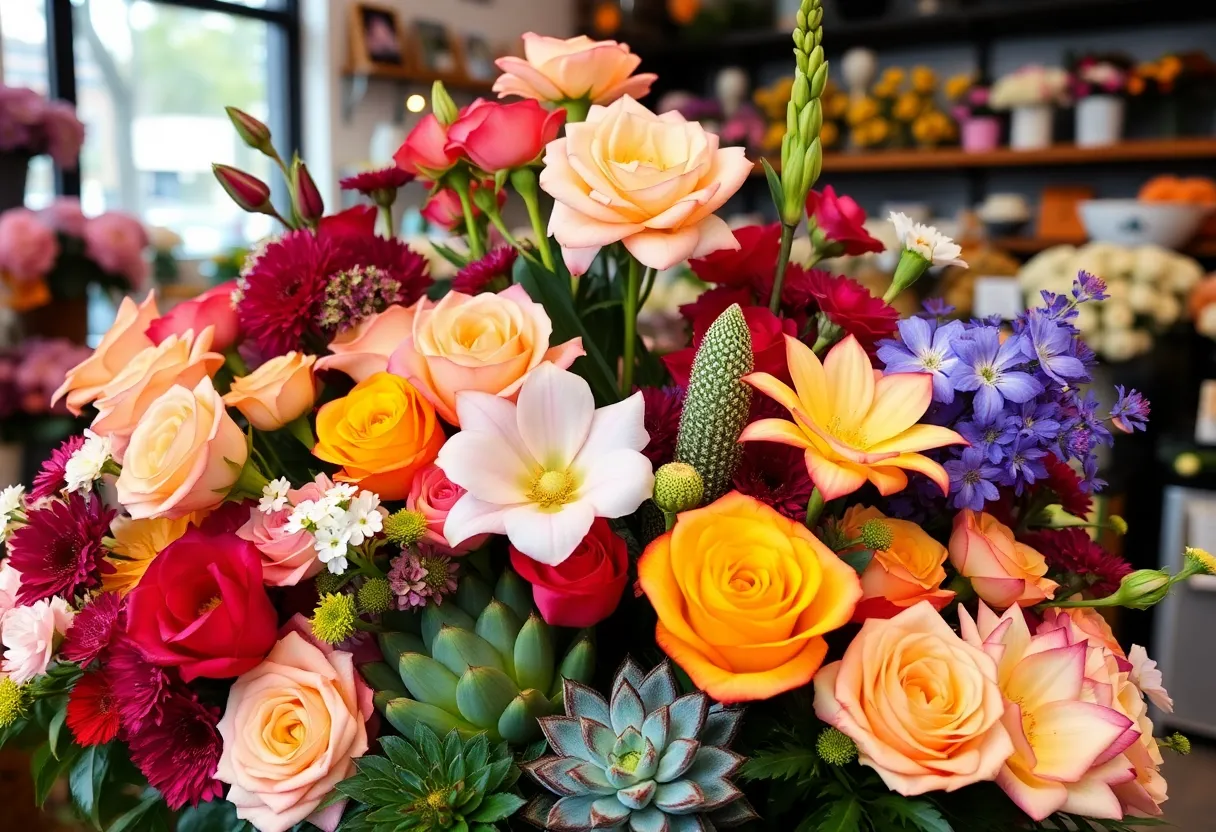News Summary
As Mother’s Day approaches, California florists are grappling with price increases due to a 10% tariff on imported flowers. A Beautiful California Florist in Long Beach has raised prices on roses significantly, from $15-$25 last year to $35-$45 this year. This trend is mirrored across the U.S., with florists reporting steep price increases and a consequent drop in demand. Florists are considering local sourcing options to alleviate costs while maintaining customer interest in floral gifts for the holiday.
California – As Mother’s Day approaches, florists face unexpected challenges due to rising tariffs on imported flowers, resulting in significant price increases for consumers. A Beautiful California Florist in Long Beach has announced price hikes of 10%, changing the price of a bunch of roses from $15-$25 last year to a range of $35-$45 this year. This development is expected to impact sales during one of the busiest seasons for florist shops nationwide.
The increase in flower prices is attributed to a 10% tariff imposed by the U.S. government on imported flowers from major exporters like Ecuador and Colombia. As these countries supply approximately 80% of all cut flowers sold in the U.S., the tariffs have restricted shipments, creating unpredictable supply levels and increased costs for florists.
Tom Johnson, manager of A Beautiful California Florist, confirmed that the current situation reflects the rising costs associated with imported flowers. Along with roses, the prices of other popular varieties such as lisianthus have seen dramatic increases, soaring by 100% compared to last year. Other floral businesses across the U.S. report similar experiences, with some raising their prices significantly. For instance, one florist raised the price of a popular arrangement from $100 to $125, leading to a notable 30% drop in demand.
The effect of these rising prices is evident as reports indicate a 14% drop in overall Mother’s Day spending among U.S. shoppers. Economic concerns linked to the tariffs and the associated price hikes are pushing customers to reconsider their purchases. Despite the increases, some shoppers continue to seek out flowers in recognition of the occasion’s significance, demonstrating that the demand for flowers remains robust, albeit more selective.
In light of these challenges, some florists are turning to local sourcing to lessen the impact of tariffs and mitigate rising costs. This strategy not only supports local growers but may also provide consumers with a wider variety of options that are not affected by import tariffs. While traditional roses remain a popular choice, some florists are encouraging alternatives like non-traditional flowers, cacti, and succulents, which can be more cost-effective and locally sourced.
A similar situation is unfolding in neighboring Arizona, where tariffs and high demand for Mother’s Day flowers have also pushed prices upward. The increase has stirred conversations about the sustainability of flower sourcing and the overall economic ramifications of such tariffs on the floral industry.
As florists prepare for the surge of Mother’s Day shoppers, they are faced with balancing inventory, pricing, and customer satisfaction. The uncertainty surrounding tariffs poses a continuing challenge to the industry, raising questions about future pricing strategies and customer behavior in the face of rising costs.
In the coming days leading up to Mother’s Day, consumers are encouraged to explore a range of options when selecting gifts for their loved ones. The ongoing price adjustments in the floral market reflect broader economic trends and the influence of international trade policies on local businesses.
Deeper Dive: News & Info About This Topic
- ABC7: Rising Tariffs Pose Challenge for SoCal Florists Ahead of Mother’s Day
- AOL: Tariffs Could Bloom Off Mother’s Day Flowers
- Fox10 Phoenix: Floral Costs Up Due to Mother’s Day, Prom Season Tariffs
- Wikipedia: Tariffs
- Bloomberg: 2025 China Ship Cost in Tariffs Trade War

Author: STAFF HERE HOLLYWOOD
The Hollywood Staff Writer represents the experienced team at HEREHollywood.com, your go-to source for actionable local news and information in Hollywood, Los Angeles County, and beyond. Specializing in "news you can use," we cover essential topics like product reviews for personal and business needs, local business directories, politics, real estate trends, neighborhood insights, and state news affecting the area—with deep expertise drawn from years of dedicated reporting and strong community input, including local press releases and business updates. We deliver top reporting on high-value events such as the Hollywood Bowl summer concerts, the Hollywood Christmas Parade, film premieres at TCL Chinese Theatre, and festivals at the Magic Castle. Our coverage extends to key organizations like the Hollywood Chamber of Commerce and Visit Hollywood, plus leading businesses in entertainment, dining, and tourism that define the local economy. As part of the broader HERE network, including HERELosAngeles.com, HEREBeverlyHills.com, HEREAnaheim.com, and HEREHuntingtonBeach.com, we provide comprehensive, credible insights into Southern California's dynamic landscape.





